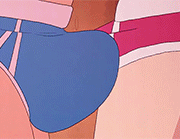- Duck and Cover
- Apr 6, 2007
-

|
If you get a house then every boring person in your life is gonna start talking about lawncare with you.
I got this
A Beginner’s Guide to Improving Your Lawn This Spring & SummerCool Season (self.lawncare)
submitted 2 years ago * by wino_tim7a102& 68 more - announcement
-- PLEASE NOTE: While questions are very welcome in the comments, be sure to check the two part FAQ below this post as it gets into many of them! --
Three points of orientation:
Make sure this guide pertains to you. This guide was written for those who are growing cool season grasses. What does that mean? Well, there are all sorts of different grasses grown on home lawns but they can generally be split into two camps: cool season and warm season. Cool season grasses include fescue, bluegrass and rye, and are most often grown in the central to northern parts of the USA or in milder parts of southern California. If you live in one of these places, you very likely have cool season turf. Warm season grasses include bermuda, centipede, zoysia, St. Augustine and bahiagrass, and are most often grown in the south and southwestern parts of the country. The differences between cool season and warm season grasses are significant and just like you can’t cook a strip steak and a beef shank in the same way, this cool season plan is simply not going to work if you have warm season turf.
If you are unsure what type of grass you have use this guide or the links in the sidebar to identify your turf.
Have reasonable expectations. Sadly we have to begin with what for some of you will be a bitter pill to swallow: if your lawn is in really bad shape, following the steps in this guide is not going to take it from a “2” to a “10” by the end of the summer. The reason for this is simple: the time to renovate and truly transform cool season lawns is in late summer and early fall. The goal here is to make big, noticeable improvements and get you ready for fall when you can truly take your lawn to the next level.
About me and about this guide. I am a lawncare DIYer. Like many of you I bought a house and then had a realization that I had to take care of a lawn and had no idea what I was doing. This guide contains many of the lessons I learned in figuring things out. It also contains lessons learned from watching Allyn Hane (Lawn Care Nut), Pete Denny - u/gciturf (GCI Turf), Matt Martin - u/thegrassfactor (The Grass Factor) and Ryan Knorr, along with reading this sub and thelawnforum.com and listening carefully to the golf course professionals I know. That said, all of the writing is my own though I owe a significant debt of gratitude to u/SirThomasFraterson and u/Unabomber007 who generously read a draft of this guide and offered thoughtful suggestions and critique.
Limitations. This is a free, generalized guide written for beginners. If you want more detail - and at a certain point you probably should - I’d suggest purchasing one of the Cool Season Guides written by either Allyn or Pete. These have far more depth than I could possibly provide in this format.
Links + Recommendations. I have no affiliation with any lawncare supplier, retailer or educator. None of the links are affiliate links and I promise you I am making absolutely zero money with this post. I chose to recommend what I did either because I have used these products myself or someone I know and trust has. As with anything in the world, your mileage - both in terms of the products recommended and advice given - may vary.
Late Winter (aka Where to Begin):
This is where you start. While it is obviously intended for you to complete these steps in February or early March, if you have found this guide later in the season you still want to start here. Every other step will depend on these things being done.
Step #1 - Measure Your Lawn.
This step is not optional. If you don’t know how big your lawn is there is no way you can apply anything to it as you’ll have no idea how much to apply. There are online tools you can use to get a rough idea of your yard’s size, but I have found they can be off by as much as two hundred square feet. My recommendation is to buy an appropriately sized tape measure or measuring wheel and actually walk your lawn. Unless you have a truly tiny yard, you’ll probably want to divide it up into different areas. To do this take your measurements and draw a small map of your property and identify your particular zones. Treat each area separately.
An example - and one we will stick with throughout this post: You have a Front Yard measuring 2000 square feet, a Side Yard measuring 1000 square feet and a Backyard measuring 2000 square feet.
Feel free to round off your numbers. If your side yard is actually 1009 square feet treating it as 1000 is not going to make a noticeable difference. Home lawns are not academic research centers.
Step #2 - Get a Soil Test.
Like the previous step, this is not optional. When you are ill and go to the doctor, he (or she) performs tests before he takes any action. He doesn't just cut you open or prescribe random medications hoping everything will work out. Before you add anything to your lawn or do any work to it, you have to test your soil. You can do this at any point, I usually do mine in February. MySoil is an easy, though very expensive source for soil testing. A much cheaper option is to use your County Extension Office, which is staffed by state university employees focused on local agriculture and gardening issues. Find their site and then look around for soil testing; it’ll be there. (Once you find your office's website, it is worth bookmarking it. It will offer a lot of advice for lawncare that is particular to your state. Some of the advice might be considered conservative by the standards of many in this sub, but it is worth having, nonetheless).
How exactly do you prepare a soil test? Here is a good video from Ryan Knorr on the subject. He is using Soil Savvy, another expensive option similar to MySoil, but the procedure will be similar for virtually any test.
If you have the time and money and really want to dial things in, I highly recommend that you do a separate soil test for each area you established in Step #1.
Step #3 - Buy a good-quality mower, sprinkler setup, broadcast spreader, backpack or pump sprayer and a scale.
Lawncare is an equipment-driven hobby and there are tons of things you can buy but these five are are the essentials. Of course if you already have one of these items, only upgrade if you feel that your current equipment isn't doing the job.
Mowers. The subject of lawnmowers could be a guide in and of itself. There is a nearly endless number of types, sub-types, brands, options and modifications to consider. However, what matters most is just two things: First, get the right size and type of mower for your property. Just as it would be insane to buy a tractor to mow a 500 square foot lawn in San Diego, it would be equally nuts to buy a manual reel mower to mow an acre in Pennsylvania. If you are concerned about power, focus more on your engine’s torque than anything else. Second, buy a mower that you actually enjoy using. If you are new to lawncare, find some family or friends with mowers and try theirs. It makes no sense to buy a mower hyped on YouTube only to have it sit around because you don’t like mowing with it.
Sprinklers. Along with sunlight, water is one of your lawn’s most basic needs. If you already have an in-ground irrigation system or can afford to install one, this is unquestionably the best way to go. Otherwise you will want to purchase above-ground units and you’ll want to spend some time in the winter or early spring to figure out a system of hoses, sprinklers, and perhaps timers that works best for you. This video from Jake the Lawn Kid offers some ideas on a possible setup.
Spreaders. Like mowers there are lots of brands to choose from here. And like mowers, what matters more than brand is getting a spreader correctly sized for your lawn. My personal recommendations: the Scotts Mini for smaller lawns (<4000 square feet) and this Echo spreader for medium to large lawns (4000-12000 square feet). Those with very large lawns may want to look into the Cadillac of spreaders from Lesco.
Sprayers. MY 4 SONS makes my favorite backpack sprayer. Sprayers Plus makes my second favorite. Both will work great for small to medium sized lawns. Those with very small lawns or those on a tight budget should go with my favorite cheap hand-held pump sprayer from D.B. Smith. Those with very large lawns or those who might favor liquid applications of fertilizer could look into a walk-behind model.
Scale. If you have a big lawn I suppose you can use the same scale you use to weigh yourself, but I prefer something a bit smaller and more accurate.
Step #4 - Fix your pH, if your soil test says you need to.
When you get your soil test back it is most likely going to indicate that you have too little of several things, and perhaps that you have too much of one or two. Ignore everything right now except for pH. This is crucial. If your pH is out of whack it is going to affect your grass' ability to make use of nutrients in your soil. If your pH is low you'll want to add lime; something like Pennington Fast Acting Lime will work. Add it according to your soil test's recommendations and in the amounts specified on the product’s label using your broadcast spreader. If your pH is too high, you'll want to add sulphur. Southern Ag Pelletized Soil Acidifier is a good product. You can apply lime or sulphur any time of the year that the ground is not frozen.
How do you use your broadcast spreader to apply granular products? This video from Scotts provides a good introduction to the process. As the video shows, most products will have indications as to how you should set your spreader. If you are a beginner I’d suggest starting a notch or two lower - meaning that you are putting out less product. Get a feel for how quickly your spreader empties its bin. Also note how far your spreader throws. The spreader in the video, obviously a Scotts model, throws 5 feet in either direction, but your spreader may throw shorter or father. Remember, the goal is always a perfectly even application.
Early Spring:
Step #5 - Aerate your lawn… but only if it is necessary.
Lawn aeration is the process of pulling soil cores out of the lawn in an effort to reduce soil compaction and allow air, water and nutrients to reach the root zone of your grass. Perhaps due to the strident marketing efforts of a couple large lawncare firms, beginners tend to think that they must aerate their lawns every spring and fall. This is not true. You should only aerate your lawn in the spring if it needs it. How do you know if it needs it? Do the screwdriver test. Any day that the ground is not frozen, take a flat-head screwdriver and attempt to push it into the soil in several places in your lawn. The screwdriver should easily be able to sink into the ground. It it cannot, water your lawn lightly and try again. If it still cannot, you should consider aeration.
Unless you have a friend who owns an aerator, doing a standard core aeration is going to require a trip to your local big box store. Realize that lawn aerators are bulky, heavy machines. Make sure your vehicle is big enough to hold one and consider renting ramps or, better, enlisting the help of a neighbor. Using a core aerator is a simple, if tiring task. This video from the Lawn Care Nut provides some helpful hints for first timers.
Do not be tempted by aerating gadgets you may find on Amazon or similar sites. Any aerator with spikes will increase, not decrease, your soil’s compaction. Hand aerators are useful tools for getting in tight places a mechanical aerator can’t reach but attempting to aerate even a small lawn with one would take many hours and be almost impossibly exhausting.
There are liquid aeration products on the market, most notably N-Ext Air8 and Simple Lawn Solutions Aerator Soil Conditioner. These claim to work by breaking molecular bonds in the soil. While initial reports seem positive, there is little academic research on these products, so the jury remains out.
Step #6 - Apply a Pre-Emergent Herbicide.
A pre-emergent herbicide is exactly what it sounds like: something you put down to prevent weeds from emerging. It differs from the more common post-emergent herbicides (discussed in Step #9) that attack weeds that have already sprouted. A pre-emergent won't prevent all weeds - or even most - but it will prevent one devastating one: crabgrass, and because it can do that it is an essential part of spring lawncare. The two main options for pre-emergents are Prodiamine and Dithiopyr. Both work well and both come in a dizzying array of formulations, both brand name and generic, liquid and granular, and mixed with fertilizer or without it. The differences matter to a certain extent - and if you are new and can’t decide, go with this easy to apply granular from Sunniland - but what matters much more is getting one of them down at as close to the right time as possible. What is that right time? When your soil temperatures are approaching 55°F. How do you know when that is? Use this website, going back to 2019 and clicking around looking at the 5 year averages for various spring dates. Doing this will give you a rough idea of the right time. As that time approaches, check the website daily. When soil temperatures are consistently around 52 or 53°F - according to the 24 hour average - go ahead and apply.
I highly recommend doing what is commonly called a split-app. Read the label of whatever pre-emergent you buy, then put it down at half the recommended dose at the time I just discussed. Keep an eye on your soil temperatures and apply the second half when they are approaching 70°F, usually about three to four weeks later. Doing this will help you stay covered even if you get a very rainy early spring.
Herbicides - both pre-emergents and post-emergents - are chemicals meant to kill plants. While they are generally quite safe for humans, it only makes sense to take reasonable precautions when applying them. The label of each product will recommend what protective gear you should wear when you apply it. At the very least I’d go with nitrile gloves, long sleeves, long pants, glasses and PVC boots.
Mid to Late Spring:
Step #7 - Throw down some fertilizer!
About two to three weeks after your first pre-emergent goes down you’ll want to apply fertilizer. This can get very complicated very quickly but I am going to try to keep it as simple as I can via the following sub-steps:
Figure out how much nitrogen your lawn needs. Grass requires a lot of things, but chief among them when it comes to nutrients is nitrogen. What you want to do is apply between .75 pound and 1.5 pounds of nitrogen per thousand square feet of grass this spring in two split doses. Lean towards somewhere between .75 to 1 pound if you fertilized heavily last fall. Go heavier if you didn’t - particularly if you have never applied fertilizer to your lawn - or if your lawn was seeded or sodded in the latter half of last year. Do not exceed 1.5 pounds of nitrogen. More will not equal better in this context.
Choose a fertilizer. Like lawn mowers, there are nearly endless options when it comes to fertilizer. The generalized nature of this post precludes an in-depth discussion of fertilizer brands. That said, if you are a true beginner, it is hard to go wrong with Milorganite. It is easy to apply and its iron content will give your lawn an enviable dark green color. Yes, there are cheaper fertilizers, better fertilizers, liquid fertilizers, etc. but Milo is a good place to start and available pretty much everywhere in the country.
Check your soil test results before you buy fertilizer. Note your levels of phosphorus (P) and potassium (K). Many of you who are new to lawncare and dealing with unkept lawns will be low on these. If you are low on P you’ll want to use what is known as a “starter fertilizer,” something like this will do the trick. If you are low on K, I would stick with Milorganite - or whatever you chose - and do a supplemental application of potassium using this Sulphate of Potash from Southern Ag. (If your soil test shows you are high in either phosphorus or potassium, you’ll want to shop for a fertilizer that does not contain them. How to do that will be made clear below).
Translate this “x pounds of nitrogen per thousand feet” (from sub-step #1) into actual pounds of fertilizer. To do this you’ll need to do some very simple, middle school-level math. Any fertilizer you buy will show its analysis on its label. The first number in the trio refers to the percentage of nitrogen in the fertilizer. (The second refers to phosphorus, the third to potassium). To get the “pounds on the ground,” use the following formula: the amount of nitrogen you want to apply ÷ the fertilizer’s nitrogen percentage in decimal form.
A quick example to help make this clear: say you were using the fertilizer in the image linked to above - Milorganite - and you wanted to apply 1.25 pounds of nitrogen this spring. The label of this fertilizer tells you it is 6% nitrogen so you would punch 1.25 ÷ .06 into your calculator. Your answer: you would want to apply about 21 pounds of this fertilizer per thousand square feet of turf.
Take this ‘x pounds fertilizer per thousand square feet’ information and apply it to the different areas of your property.
Using Milorganite and the same 2000 square foot Front Yard, 2000 square foot Backyard and 1000 square foot Side Yard we used earlier, your numbers would look like:
Front Yard: 42 pounds (21*2)
Backyard: 42 pounds
Side Yard: 21 pounds (21*1)
You can use this information to figure out how many bags of fertilizer you need to buy. As your total amount of fertilizer is 105 pounds (42+42+21) and Milorganite comes in 32 pound bags, you’d need to purchase four bags.
Split up your total fertilizer amount into two applications. The first application, to be done two to three weeks after your first pre-emergent goes down, should amount to 2/3rds of your total fertilizer. Your second application which should go down three weeks later should consist of the remaining 1/3rd.
To continue with our example: For your Front Yard and Backyard your first application would be 28 pounds followed by a 14 pounds application three weeks later. Your Side Yard would be 14 pounds and then 7 pounds on the same schedule
Apply using the same technique discussed in Step #4. As discussed there, lower your spreader setting when you are first beginning so as to ensure an even application.
Step #8 - Apply some humic acid and sea kelp.
This step is optional but I wouldn’t skip it unless you lack the money or time. Humic acid is derived from compressed organic mattter mined from the earth and in that sense it can almost be thought of as like an essence of compost. Humic acid will help improve your soil chemistry and structure and allow your grass to better take up the nutrients you provided it in Step #7. It will also encourage positive microbial growth in your soil. Sea kelp contains two major plant growth hormones that are thought to encourage root growth. There are products like N-EXT RGS and this blend from Simple Lawn Solutions that combine both humic acid and sea kelp (both are liquid products and are best applied using a cheap hose-end sprayer attachment) but you could also buy them separately: The Andersons makes an easy to apply humic acid granular and kelp4less.com offers a variety of sea kelp products. The latter two suggestions offer great value.
Application rates can vary depending on which humid acid and kelp products you pick. I’d strongly recommend following the label instructions of any product you buy.
Humic and sea kelp can be applied at any point during the growing season. I’d recommend a label rate application in spring (around the time of your first fertilizer application - see step #7) and another in fall. If using a granular product, you can apply when you apply your fertilizer but do not mix the two in your spreader. Instead do two separate applications, one immediately after the other.
Step #9 - Kill your weeds.
Your lawn probably has weeds and spring is going to be a time they are going to rapidly grow. Getting rid of them is important as many weeds will outcompete your grass if given the chance. There are thousands of herbicides available but you’ll need just a couple:
An all-purpose. This will be what you will use on most of your broadleaf weeds like dandelions and plantains. Bayer Advanced makes a product that is effective and available basically everywhere. Compare-n-Save makes an incredibly cheap version that works about as well. SpeedZone is a step up, a “higher power” product used by many professionals, but is not something I would recommend if you have never sprayed weeds before as over-spraying it can do serious damage.
Something for clover. The above products will damage clover, but with the possible exception of SpeedZone, probably won’t knock it out. If you want to kill it - along with its “cousins,” oxalis and chickweed - you’ll need something that contains triclopyr. Your best option is the easy to find Weed B Gon Chickweed, Clover, Oxalis Killer.
Specialty items for grassy weeds and other hard to kill items. A favorite of this sub, Tenacity works great on things like crabgrass, annual bluegrass, nimblewill, and yellow nutsedge. Quinclorac also works on crabgrass but if you put down a pre-emergent (Step #6) you shouldn’t have much to deal with. I’d hold off on buying either of these until you see if you actually need them.
A few details to note regarding herbicides:
Surfactants. Tenacity, Quinclorac, Weed B Gon CCO and the Compare-n-Save product will work much better when mixed with a surfactant which helps the herbicide stick to the weeds. Neither SpeedZone nor the Bayer product need one.
Marking Dye. Many people find a marking dye to be helpful when spraying weeds. The dye won’t last long but will help you know what weeds you have sprayed and what ones you haven’t which will prevent you from missing some weeds and over-spraying others.
Dicamba + Exposed Tree Roots. The three herbicides from Bayer Advanced, Compare-n-Save and SpeedZone all contain dicamba. Dicamba is very effective against weeds but when sprayed onto exposed tree roots it can damage trees. If you have exposed tree roots in your lawn you’ll want to avoid spraying any of these products near them.
Temperature considerations when spraying herbicides. Post-emergent herbicides can be used at any time weeds are actively growing. However, many herbicides can damage your grass when sprayed at times that air temperatures exceed 85°F. This presents a problem for those of you with warm summers. The ideal solution is to wait for a cold spell, but that is not always practical. A secondary solution would be to wait until the time of day that temperatures dip below 85°F, usually around 5 or 6pm - and spray then. Depending on the weather, that will give the herbicide 18+ hours to absorb into the plants before temperatures return to 85°F.
How to spray weeds: This video from the Lawn Care Nut covers the basics of spot spraying. A few additional points that Allyn didn’t cover: Avoid watering or mowing for at least 24 hours after spraying. The point is to let the herbicide get absorbed into the weed and work its way through it. Washing the herbicide off with water or cutting the sprayed parts off with a mower will obviously hinder that effort.
Step #10 - Treat your lawn for grubs (if they are an issue in your neighborhood) and, if needed, treat for other insects.
Grubs are the larvae of beetles, to the untrained eye they look almost like little white shrimp. They commonly feed on the roots of grass plants and in doing so can devastate a lawn. Grubs are not present in every lawn or even in every neighborhood. I obviously can’t tell you if they are present in yours. You can ask around in your local garden center or chat with a neighbor who is into lawncare and see if he or she is treating for them. If you think grubs might be an issue for you, I suggest a two-pronged attack:
Around the time of your first fertilizer app (Step #7): Apply Bayer Advanced 24 Hour Grub Killer Plus. Despite its name, this won’t kill grubs in 24 hours but it will get many of them within a week. Still, yearly applications of the Scotts product suggested below make for a better long-term strategy.
Around the time of your second fertilizer app: Apply Scotts Grub-Ex. Again, despite its marketing, this won’t do a lot for mature grubs that you might have, but will serve more as a preventive product for next season. In that role it is quite effective.
For other insects - gnats, mosquitos, fleas, ants, ticks, etc. I’d go simple and easy with this hose-end option from Sevin. It can be sprayed any time of year without issue.
This product can kill bees so be sure to avoid spraying it around any flowering plants. And frankly, while ticks and mosquitos can be harmful to people and pets, if your lawn insect population amounts to little more than a few gnats and a couple ants, I would skip this application altogether.
Summer:
Cool season grass has the name it does for a good reason: it thrives during the cooler days of spring and fall. And it struggles in summer, at least in any place where daytime highs exceed 85°F with any regularity. Thus, the proper approach to summer is to hang on, keep the grass healthy and prepare for fall when it can be at its best again.
Step #11 - Mow your lawn!
While I put this step in this section as it is most relevant to summer, make no mistake about it, you should begin mowing as soon as your grass beings growing in the spring. A few tips to help you along:
Mow often. It would be very difficult to mow your lawn too often. Aim for two to three times a week in spring and two times a week in summer.
“The 1/3rd Rule.” Whenever you mow, you never want to remove more than 1/3rd of the grass blades at any point. Doing so can make it difficult for the grass to recover. If you have missed a few mows due to vacation or other obligations, mow higher and gradually bring your height down over a period of a few days.
Mowing height. Mow at 3” during the spring and at 4” during the summer. If you live somewhere with lots of summer humidity, consider mowing at 3” all year long. Feel free to adjust these as you gain experience, but despite its popularity on YouTube, I’d strongly recommend against mowing below 2.75” during the summer unless you live somewhere very cool (North Dakota, Maine, Canada, etc.) or have a lot of lawncare experience.
Mulch vs. Bag vs. Side Discharge. This is a much talked about subject. Assuming you have a mower and blade that can mulch effectively, it makes sense to do so. But if you are mowing every two days, side discharge can be fine too as your clippings will be quite small in size. Bagging should be done when you are mowing a lawn with lots of weeds or one that has fungus issues.
Keep your blades sharp. It is essential that you keep your lawnmower blades sharp. You can sharpen them yourself or take them somewhere to be sharpened. Ensure you sharpen them at least once or twice per season being sure to do so more often if your blades are regularly doing battle with twigs, stones or other debris.
Step #12 - Water effectively.
If you live in a cooler, rainier place you might be able to get away without watering much in the spring but virtually everyone is going to have to water in the summer. Here are some tips to water effectively:
How much water? Water 1 inch per week in the spring and 1.5 inches per week in the summer. Subtract any rain you receive. How do you know how much rain you have received? You can use data found online but I prefer a cheap rain gauge that I keep nailed to a fencepost in my backyard.
Calibrate your sprinklers. Whether you have an in-ground system or a makeshift one (see Step #3), you’ll want to know how long it takes you to put down 1/2 inch of water in each zone of your lawn. The best way to do that is to lay out a few empty tuna cans or plastic deli containers and run your system and see how long, on average, it takes to reach a 1/2 inch. Again, be sure to do this for each zone. Do not assume all zones will take the same amount of time.
“Deep and Infrequent.” This is a phrase you hear a lot in the lawncare community when it comes to watering and for good reason. Watering a little bit every day is a bad idea that encourages grass to grow shallow roots. Instead you’ll want to put down 1/2 inch twice a week during the spring and three times a week during the summer.
When to water. The ideal time to water is around 5am. If you have a decent in-ground system or a timer attached to your above-ground setup, this should not be a problem. If you don’t, and don’t want to wake up at 5am, then just water whenever you do wakeup. Don’t water in the middle of the day as the heat and sun will evaporate the water before it makes its way into the ground. Also don’t water at night as wet grass encourages fungal growth.
Step #13 - Prevent fungal diseases if you live in an area where they might strike.
While humans and animals are most often stricken with viral or bacterial diseases, these almost never occur in cool season grasses grown for home lawns. What do occur are fungal diseases. Fungi, as you might have learned in high school science, are a separate kingdom of organisms apart from plants, animals and other tiny things. Fungi that affect lawns require two things in order to grow: heat and humidity. If you have conditions where the temperature (in degrees Fahrenheit) and the percent humidity added together equal 150 or higher, you are at risk for disease. Things you can do to lower your risk include:
Get dew off of your grass. Dew looks pretty to some people but for your grass it is like sitting next to a coughing child on a flight. While not easy or practical, if you are at risk of fungal disease, try and remove dew from your grass as early and often as you can. If you have a small lawn you can use your leaf blower to simply blow it off. If you have a large lawn you could consider a golf course tool, the dew whip.
Go light on fertilizer. In step #7 I made clear that you could put down anywhere from .75 to 1.5 pounds of nitrogen in the spring. If you live somewhere where you expect fungus pressures to be high, lean towards the lower end of that scale. Whatever you do, don’t go over 1.5 pounds as excessive spring fertilization is an invitation for fungus.
Don’t water in the late afternoon or evening. As discussed earlier, this, combined with dew will leave your grass drenched all evening which along with summer warmth provide ideal conditions for fungal growth.
Use fungicides. Fungicides are chemical treatments that combat fungus. You can apply them in one of two ways: first, in smaller preventive doses, or second, if fungus has hit your lawn, in larger curative doses. A full guide to fungicides is far beyond the scope of this post, but if you want to explore this topic more, I suggest this guide from Michigan State University as a starting point. But for now, here are some quick thoughts:
Preventing fungus is much easier than combatting it once it has appeared. Think of preventing fungus like brushing your teeth. You brush your teeth to prevent tooth and gum disease. If you were to stop brushing your teeth you would surely have some difficult and expensive experiences at the dentist later on. If you are in an area where you are likely to reach that aforementioned 150 temperature and humidity number, you’ll want to apply preventative applications of fungicide.
Liquid vs. Granular: I strongly prefer liquid fungicides as several are best absorbed through the leaves or crowns of the grass. That said, using liquid fungicides requires advanced knowledge of the products you are putting down, a precisely calibrated sprayer, and skill to put them down correctly and evenly. Granular options might not work as quite well - though for some diseases they can match their liquid counterparts - but granulars are probably a better option for beginners.
Resistance: A major issue with fungicides is that if the same type of fungicide is used too often, fungi will quickly evolve a resistance to it. Thus different classes of fungicides should be used in combination or rotation.
A super easy plan: Every two to three weeks from the beginning of June to the middle of September rotate between applications of big box store granular propiconazole and granular azoxystrobin. Apply both at the preventative rates unless signs of fungus appear at which point you should switch immediately to the curative rates.
A reminder: When applying fungicides - just like with herbicides or insecticides - be sure to wear protective gear. (See Step #6).
Step #14 - Plan for fall.
Fall is the optimal time to seed cool season lawns. If your lawn is thin, you’ll want to overseed it. The best time for this is when your soil temperatures fall to about 70°F. (To find out when this is use the tool linked to in Step #6). If you didn’t aerate in the spring, doing so in the fall - and then seeding - is generally a good idea. Spend some time figuring out what type of seed to plant, what type of starter fertilizer you are going to use, how you are going to control weeds and how you will handle watering. The more detailed your plan going into fall, the better your chances for success.
Plan Review:
NOW
Measure lawn
Soil test
Buy equipment.
Fix pH (if needed)
WHEN SOIL TEMPERATURES APPROACH 55°F:
Aeration (only if needed)
Pre-emergent (first half of split-app)
TWO TO THREE WEEKS LATER:
Fertilizer (2/3rd app)
Humic Acid/Sea Kelp
Grub Treatment #1 (if needed)
Begin post-emergent weed spraying
Post-emergents can be used at any time that weeds and grass are actively growing. However, as explained in Step #9, damage to grass can occur when using some herbicides when temperatures exceed 85°F.
WHEN SOIL TEMPERATURES APPROACH 70°F:
Pre-emergent (second half of split-app)
THREE WEEKS AFTER FIRST FERTILIZER APPLICATION:
Fertilizer (1/3rd app)
Grub Treatment #2
THROUGHOUT SUMMER:
Fungicide applications (if appropriate)
Proper mowing
Proper watering
Plan for fall
|







































